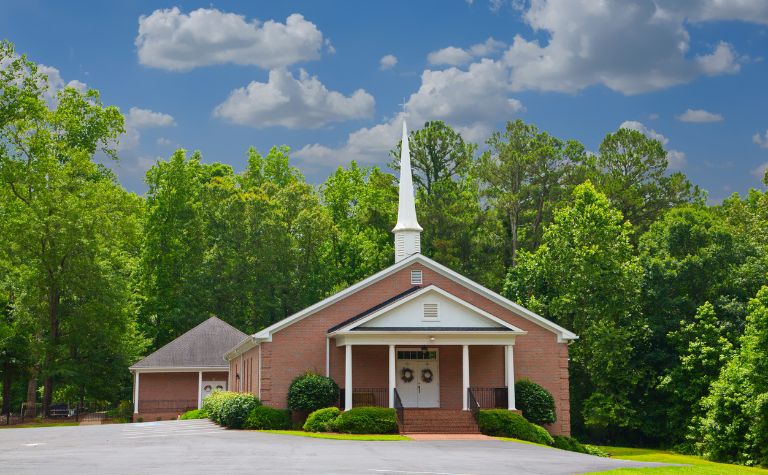The Baptist tradition and Mormonism are two distinct belief systems with deep-rooted histories and unique practices.
While both have emerged from the broader landscape of spiritual beliefs, they have carved out individual identities.
This article offers a comparative overview, shedding light on their similarities and differences, and enhancing our understanding of their respective places in the tapestry of global beliefs.

Comparing the Baptist Tradition and Mormonism: An Overview
“Baptist” derives from the Greek word “baptizo,” meaning “to immerse” or “dip,” reflecting the tradition’s emphasis on believer’s baptism by immersion.
“Mormon” comes from the “Book of Mormon,” a sacred text in the LDS Church, named after an ancient prophet and historian, Mormon, who compiled the book.
| Baptist Tradition | Mormonism (LDS Church) | |
|---|---|---|
| Name | Baptist | The Church of Jesus Christ of Latter-Day Saints |
| Size | Approx. 100 million worldwide | Approx. 16 million worldwide |
| Date Started | 17th century | 1830 |
| Founder | John Smyth (among others) | Joseph Smith Jr. |
| Key Beliefs | Salvation by faith alone, believer’s baptism | Restoration of original church, additional scriptures, priesthood authority |
| Key Practices | Believer’s baptism by immersion, Lord’s Supper | Baptism, endowments, sealing, priesthood ordinations |
| Divisions | Numerous (e.g., Southern Baptist, American Baptist) | Mainly LDS, with smaller offshoot groups |
| Central Location | Varies by denomination | Salt Lake City, Utah |
| Sacred Texts | Bible | Bible, Book of Mormon, Doctrine & Covenants, Pearl of Great Price |
In Mormonism, “Restoration” refers to the belief that the original church of Jesus Christ, lost after the apostolic age, was restored to the earth through the prophet Joseph Smith.
This restoration included the return of priesthood authority, lost teachings, and additional scriptures, notably the Book of Mormon.
Communion: Similarities and Differences
| Baptist Tradition | Mormonism (LDS Church) | |
|---|---|---|
| Method | Bread and grape juice/wine; symbolic of Christ’s body and blood | Bread and water; symbolic of Christ’s body and blood |
| Frequency | Varies; often monthly or quarterly | Weekly during Sunday services |
| Participants | Believers who have professed faith in Jesus | Baptized members; age 8 and older |
| Significance | Remembrance of Christ’s sacrifice | Renewal of baptismal covenants |
Baptism: Similarities and Differences
| Baptist Tradition | Mormonism (LDS Church) | |
|---|---|---|
| Method | Immersion in water | Immersion in water |
| Age | Age of accountability; after a profession of faith | Age 8 and older |
| Purpose | Public declaration of faith and identification with Christ’s death, burial, and resurrection | Entrance into the LDS Church and covenant with God |
| Performed by | Ordained ministers or church elders | Priesthood holders (usually at least Aaronic Priesthood) |

Baptist and Mormon Beliefs: Similarities and Differences
Mormons differ from Baptists in their view of the Godhead.
While Baptists adhere to the Trinitarian concept of one God in three persons (Father, Son, and Holy Spirit), Mormons see them as three distinct beings united in purpose, not one singular entity.
| Baptist Tradition | Mormonism (LDS Church) | |
|---|---|---|
| The Bible | Inerrant word of God; primary authority | One of four standard works; additional scriptures recognized |
| God | One God, eternal and unchanging | Heavenly Father with a physical body; Godhead consists of three separate beings |
| Jesus Christ | Son of God, fully divine and fully human | Firstborn spirit child of Heavenly Father; Savior of humanity |
| The Trinity | One God in three persons: Father, Son, Holy Spirit | Godhead consists of three separate beings with one purpose |
| The Holy Spirit | Third person of the Trinity; indwells believers | Separate being from Father and Son; provides guidance and testimony |
| The Atonement | Christ’s sacrifice covers all sins for those who believe | Essential for salvation; requires faith, repentance, and ordinances |
| The Resurrection | All will be resurrected; believers to eternal life | Universal resurrection; varying degrees of glory based on life’s choices |
| The Church | Local congregations; autonomy; priesthood of all believers | Organized hierarchy; global church with centralized leadership |
| Church Tradition | Varies; Sola Scriptura principle emphasized | Church leaders’ teachings and revelations are important alongside scriptures |
| The Second Coming | Imminent return of Christ; pre-, post-, and amillennial views | Jesus will return and reign from two global capitals: Jerusalem and Zion (in America) |
Mormons believe Jesus is the literal firstborn spirit child of God.
On the other hand, Baptists hold that Jesus existed eternally before the incarnation, co-equal with the Father and the Holy Spirit, not as a created being but as the eternal Son of God, part of the Trinity.

Baptist and Mormon Practices Compared
| Baptist Tradition | Mormonism (LDS Church) | |
|---|---|---|
| Baptism | By immersion after profession of faith | By immersion at age 8 or older by priesthood holder |
| Communion | Lord’s Supper; symbolic remembrance | Sacrament; symbolic renewal of covenants |
| Prayer | Direct communication with God | Directed to Heavenly Father in Jesus’ name |
| Church Governance | Local church autonomy; congregational | Hierarchical with a prophet and apostles |
| Missionary Work | Encouraged; various mission boards | Two-year missions encouraged for young adults |
| Tithing | Encouraged as act of worship and stewardship | Mandatory 10% of income for good standing |
| Temple/Church Service | Worship in churches; no temples | Worship in chapels; sacred ordinances in temples |
| Laying on of Hands | Often for ordination or healing | Essential for certain ordinances like confirmation |
| Fasting | Personal or congregational choice | Monthly fast for two meals; offerings given to the needy |
| Bible Study | Emphasized; personal and group studies | Studied alongside other LDS scriptures |
In Mormonism, tithing is a command. If a member doesn’t tithe, they may not be deemed “temple worthy,” meaning they cannot participate in certain temple ordinances.
Additionally, not tithing might impact a member’s standing in the community and their ability to serve in certain church callings.
10 Key Events in Baptist and Mormon History
| Baptist History | Mormonism (LDS Church) History |
|---|---|
| 1. John Smyth baptizes first English Baptists (1609) | 1. First Vision of Joseph Smith (1820) |
| 2. Thomas Helwys establishes first Baptist church in England (1612) | 2. Publication of the Book of Mormon (1830) |
| 3. Roger Williams founds First Baptist Church in America (1638) | 3. Church officially organized in Fayette, NY (1830) |
| 4. London Baptist Confession of Faith (1689) | 4. First temple dedicated in Kirtland, OH (1836) |
| 5. Formation of the Baptist Missionary Society (1792) | 5. Mormons forced to leave Missouri (1838) |
| 6. Southern Baptist Convention established (1845) | 6. Nauvoo era and martyrdom of Joseph Smith (1844) |
| 7. Landmarkism movement emerges (1850s) | 7. Pioneers enter Salt Lake Valley (1847) |
| 8. Baptist World Alliance formed (1905) | 8. Official declaration ending plural marriage (1890) |
| 9. Conservative Resurgence in Southern Baptist Convention (1980s) | 9. Priesthood available to all worthy male members (1978) |
| 10. Cooperative Program for missions funding initiated (1925) | 10. Dedication of the Rome Italy Temple (2019) |
What is the largest denomination in the Baptist tradition?
The largest denomination within the Baptist tradition is the Southern Baptist Convention (SBC).
Founded in 1845 in the United States, the SBC has grown significantly and plays a prominent role in American evangelicalism, emphasizing biblical inerrancy and individual conversion experiences.
How did Joseph Smith die?
Joseph Smith was killed in 1844. He and his brother Hyrum were jailed in Carthage, Illinois, on charges related to destroying a printing press.
A mob stormed the jail, and both were fatally shot. His death marked a pivotal moment in Mormon history.
References:
[1] churchofjesuschrist.org
[2] Baptists – Britannica
Recent Posts
Every year, millions around the globe commemorate the birth of Jesus Christ on December 25th, a date synonymous with Christmas and festive celebrations. However, despite its widespread...
The term "Nativity" is often immediately associated with the birth of Jesus Christ and the stories surrounding this event. Yet, the essence of the word encompasses much more than a single...
